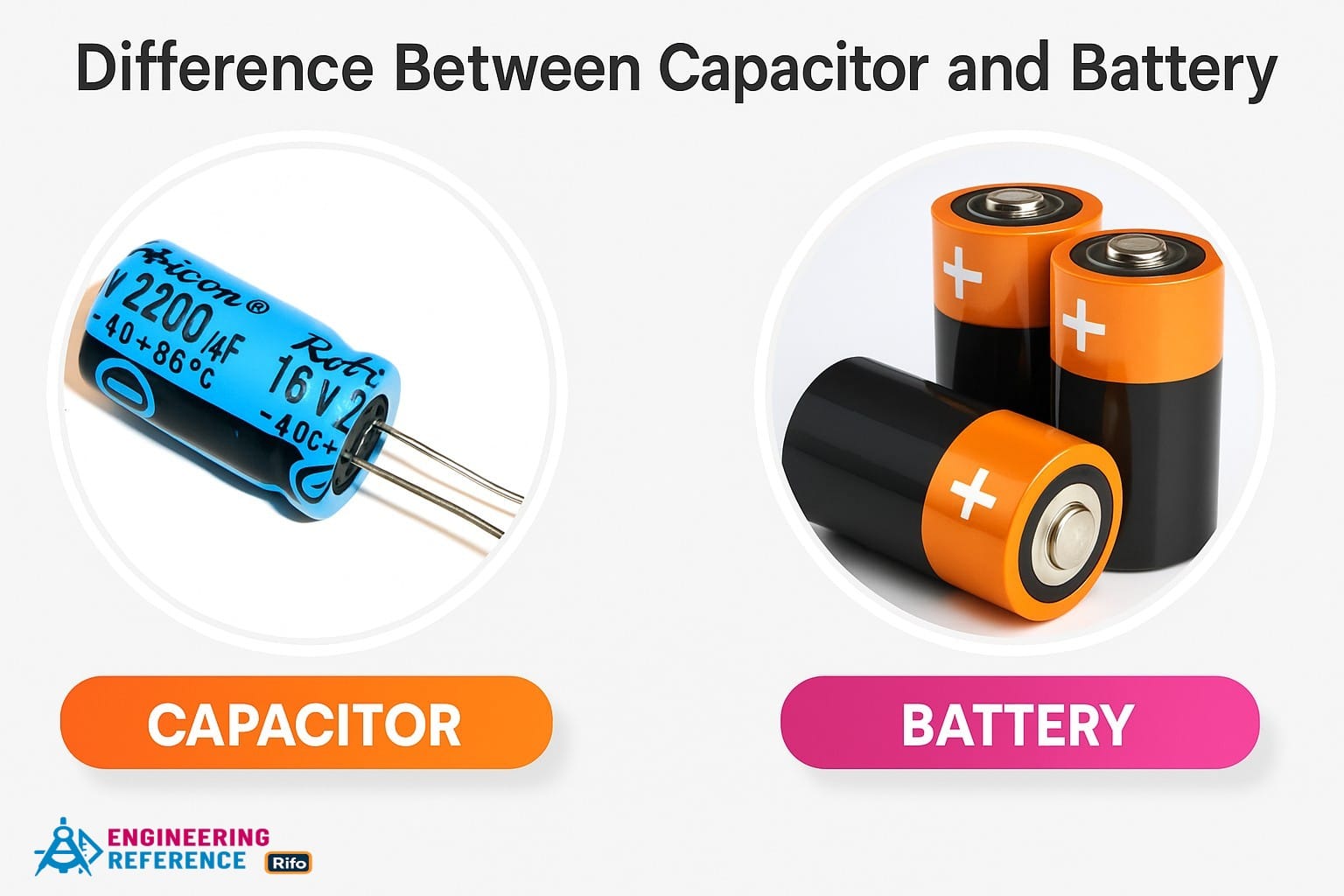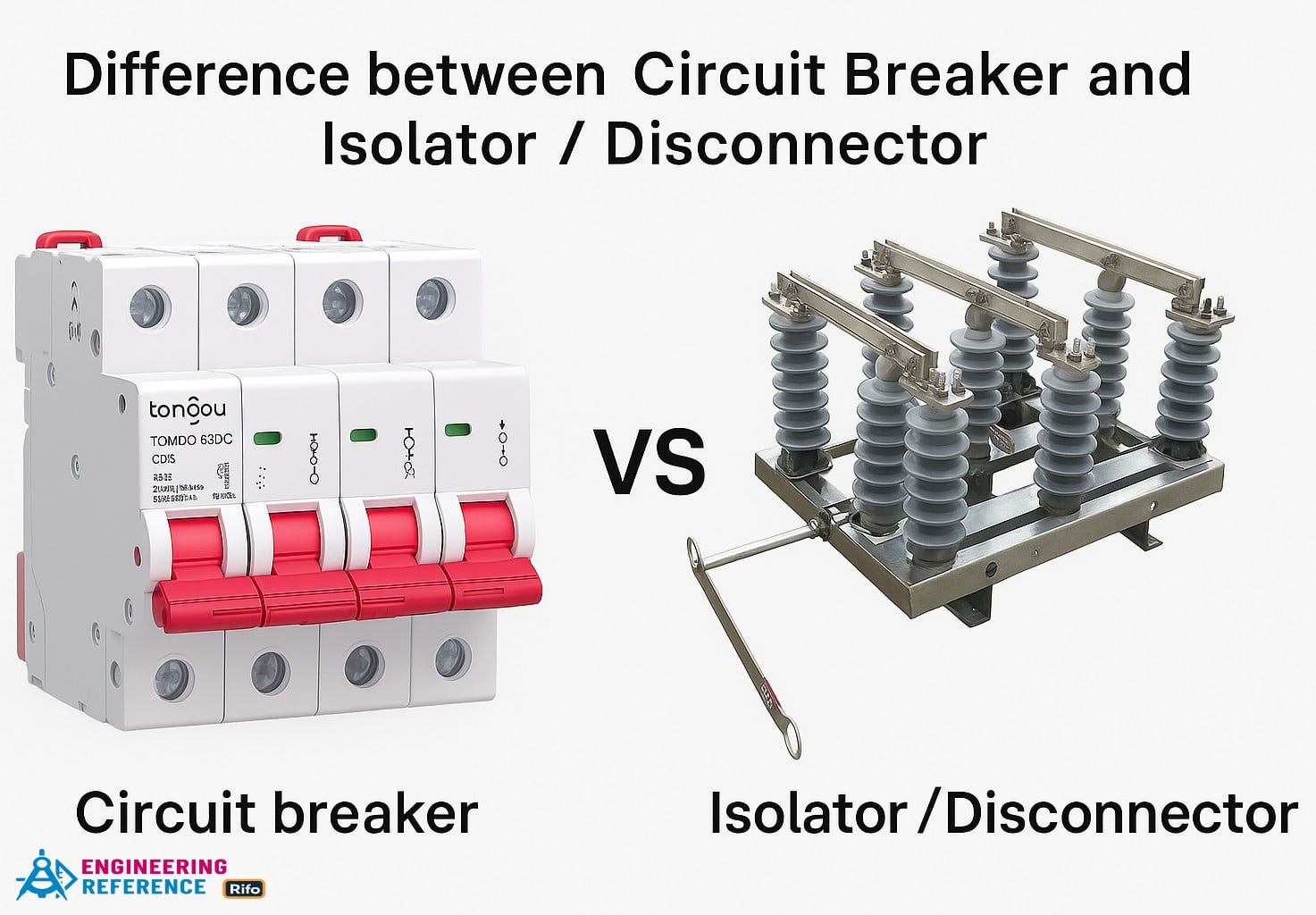Main Difference Between Fuse and Circuit Breaker
Circuit Breaker and Fuse are essential parts of an electrical system that protect equipment and wiring from damage. Both are designed to stop the flow of excess current in a circuit, but they work in different ways. Think of them as safety guards—each one reacts differently when too much electricity tries to pass through.
The main difference between a fuse and a circuit breaker lies in how they respond to an overload. A fuse contains a thin metal strip that melts when too much current flows through it, cutting off the electrical path. Once melted, the fuse must be replaced before the circuit can work again. On the other hand, a circuit breaker uses an internal electromagnetic or thermal switch that automatically trips open when it detects excess current caused by an overload or short circuit. After fixing the issue, the breaker can simply be reset instead of replaced.
For example, in a home electrical panel, a fuse might blow when a heater and an iron are used on the same socket, while a circuit breaker would just trip off. This difference makes circuit breakers more convenient for repeated use, while fuses are simpler and often cheaper but need replacement each time they operate.
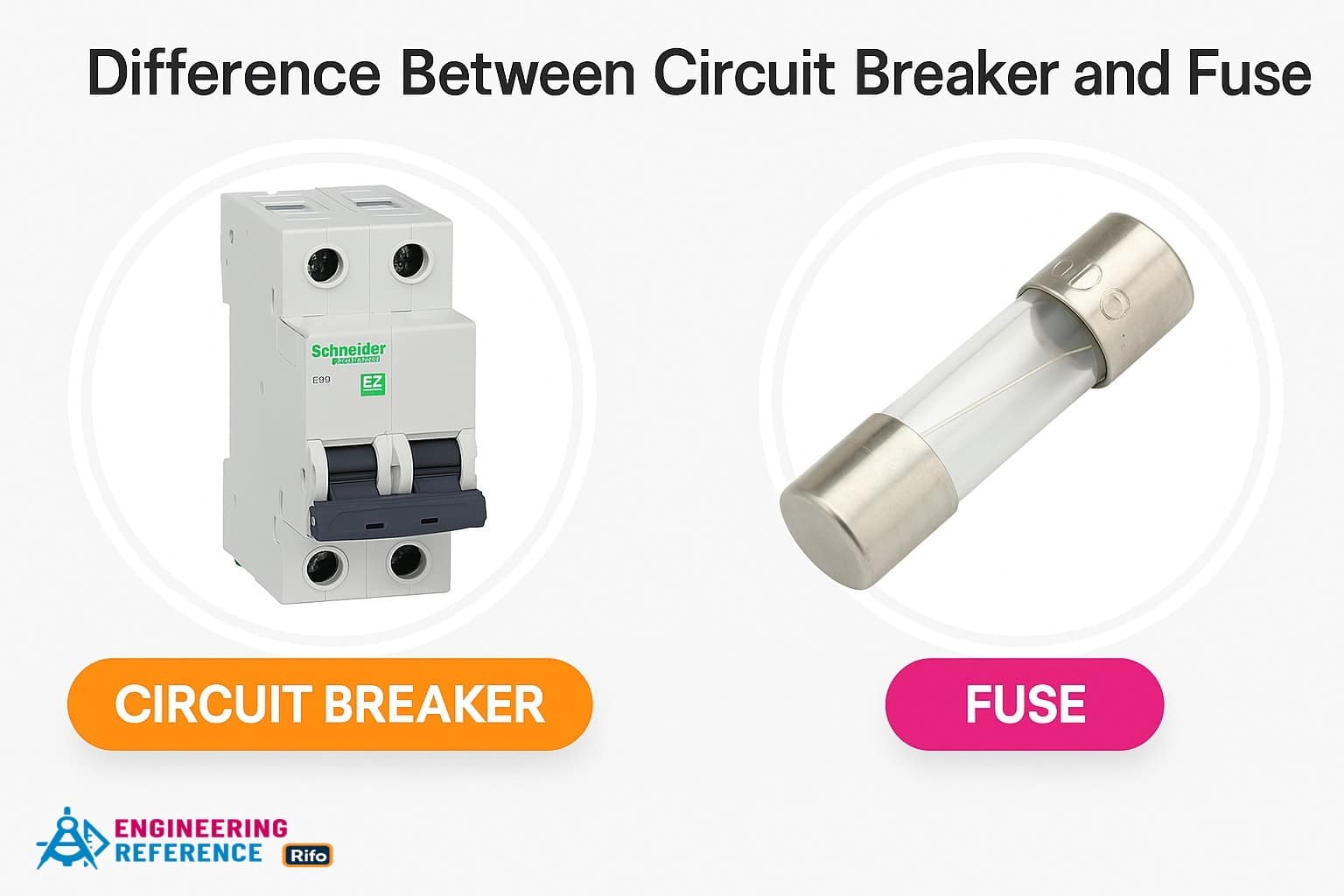
Watch This Video to Learn the Difference Between Circuit Breaker and Fuse (Fuse vs Circuit Breaker)
What Is a Fuse?
A fuse is an electrical safety device that protects a circuit by stopping the flow of current when it becomes too high. It acts like a guard that breaks the connection whenever electricity tries to pass beyond a safe limit. Inside the fuse, there is a thin metal wire or strip that melts when too much current flows through it. This melting opens the circuit and prevents damage to connected equipment or wiring.
For example, if a motor or appliance suddenly draws more power than normal, the fuse will “blow,” cutting off the current and keeping the rest of the system safe from overheating or fire.
What Is a Circuit Breaker?
A circuit breaker is an automatically operated electrical switch that protects an electrical circuit from damage when too much current flows due to an overload or short circuit. Its main job is to stop the flow of electric current as soon as a fault is detected. Unlike a fuse, a circuit breaker doesn’t need to be replaced after it operates—it can simply be reset to restore power once the problem is fixed.
For example, when several heavy appliances like an air conditioner and washing machine run at the same time, the circuit breaker may trip to prevent overheating or fire hazards. While fuses are used in small or sensitive electronic devices that need low current, circuit breakers are preferred for large machines, industrial systems, and high-power applications that handle a greater amount of current safely.
Differences Between Circuit Breaker and Fuse
| Characteristics | Fuse | Circuit Breaker |
|---|---|---|
| Symbol | 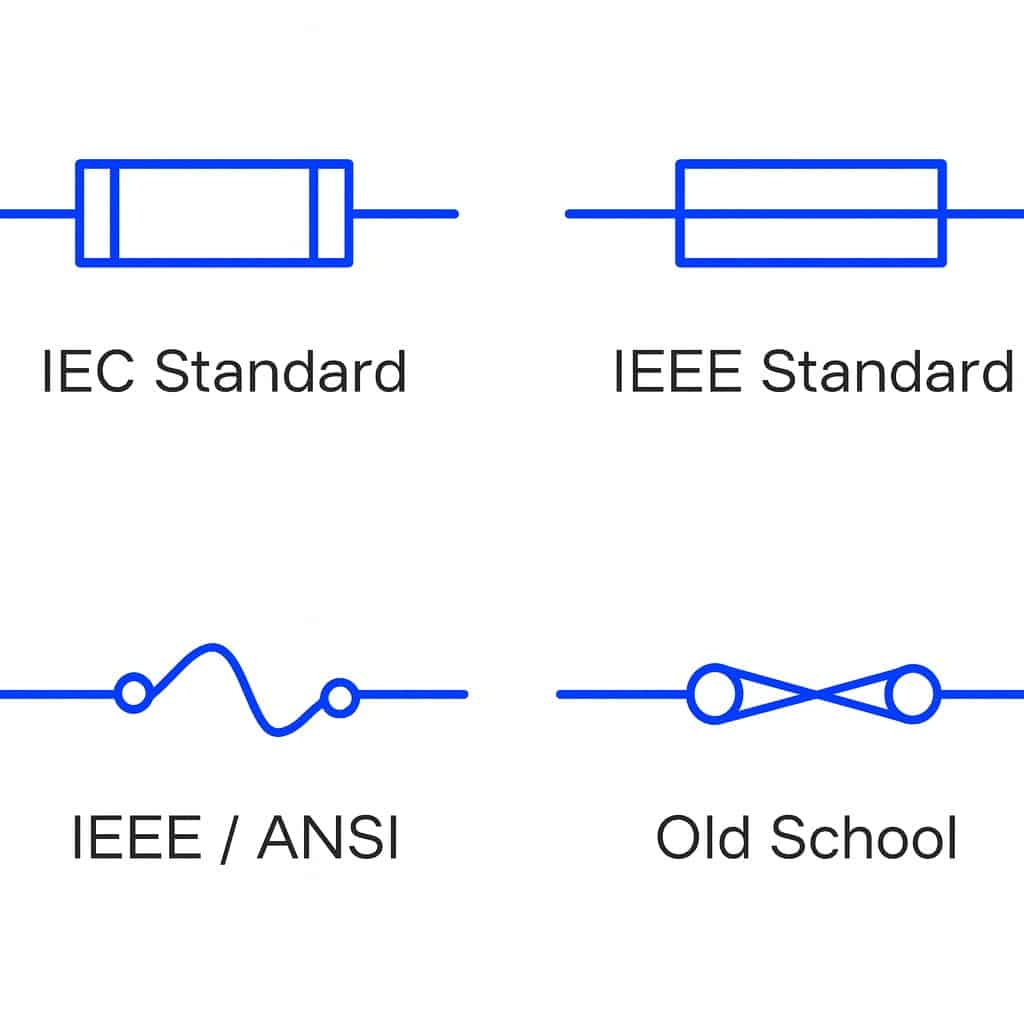
|
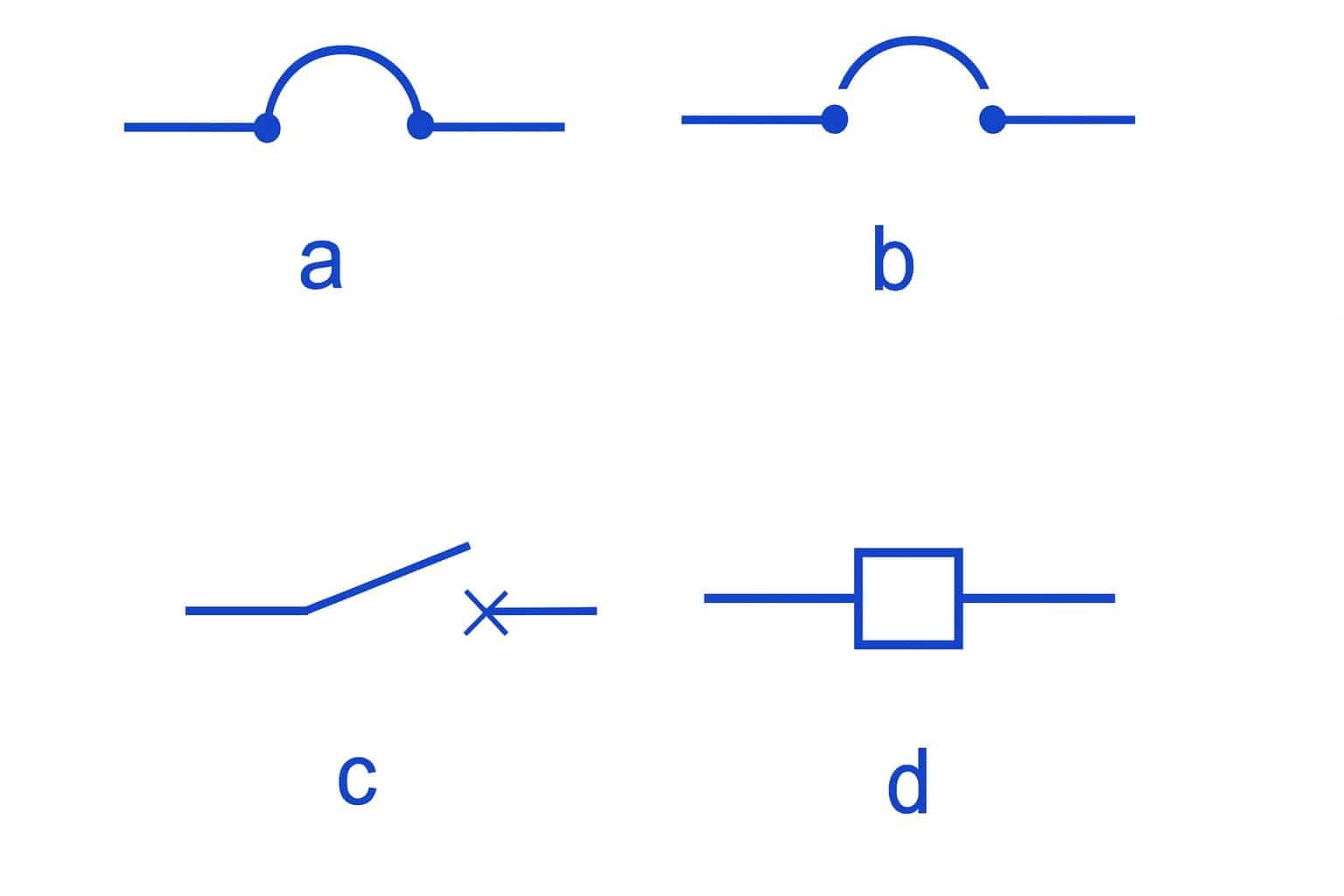
|
| Construction | A fuse (especially the fuse element or fuse link) is made of a small piece of metal such as copper, silver, aluminum, zinc, or their alloys, which melts when it overheats under a specific load. | A circuit breaker has an electromechanical switch and relay mechanism that trip when the current exceeds a safe level due to overload or short circuit. |
| Function | Performs both detection and interruption automatically, since it melts and breaks the circuit when the current is too high. | Performs only interruption, while fault detection is handled by an internal relay within the breaker. |
| Operation | The operation of a fuse is fully automatic—it melts without any manual action. | The circuit breaker can operate automatically or manually, allowing reset and reuse after tripping. |
| Operating Time | Very fast, around 0.002 seconds. | Slightly slower, between 0.01–0.05 seconds. |
| Working Principle | Works on the heating effect of current (I²R), meaning the conductor melts due to excessive heat. | Operates on thermal or electromagnetic (thermal-magnetic) principles, combining heat and magnetic forces to trip the switch. |
| Protection | Provides protection mainly against overload, and sometimes against overcurrent and short circuits. | Offers protection against overload, overcurrent, and short circuits, making it more versatile. |
| Breaking Capacity | Low—can handle limited fault currents. | High—suitable for larger fault currents in industrial systems. |
| Ambient Temperature | Performance is independent of ambient temperature. | Operation depends on the surrounding temperature, especially in thermal models. |
| Characteristic Curve | The fuse characteristic curve may shift over time due to the aging effect of the metal. | The circuit breaker curve remains stable without significant changes over time. |
| Replacement & Post-Operation | Can be used only once, as it destroys itself after interrupting the fault. It must be replaced after each operation. | Can be reset and reused multiple times, making it more reliable and cost-effective in the long term. |
| Auxiliary Contacts | Not required in a fuse. | May include auxiliary contacts for monitoring and control purposes. |
| Status Indication | Provides no visual status during operation—users must inspect to know if it has blown. | Shows clear indication of its status during or after tripping. |
| Switching Operation | Cannot be used as an ON–OFF switch. | Can function as an ON–OFF switch, allowing manual control of the circuit. |
| Pole Version | Available only in single-pole versions. | Available in single and multi-pole versions for various applications. |
| Cost | Low-cost protection device. | Higher cost, depending on size and application, but offers greater convenience. |
| Applications | Commonly used for low-current applications such as small electronic devices, appliances, and household wiring. | Used for high-current applications including motors, transformers, industrial machinery, and home electrical panels. |
In short, a fuse is simple, fast, and inexpensive but must be replaced after one use, while a circuit breaker is reusable, more reliable, and better suited for heavy-duty and industrial protection systems.
Frequently Asked Questions – FAQs
Q1. What is a fuse?
A fuse is an electrical safety device that disconnects the current in a circuit when the flow becomes too high. It contains a thin metal wire or strip that melts when the current exceeds a safe limit, breaking the circuit and protecting connected devices from damage or fire.
Q2. What is a circuit breaker?
A circuit breaker is an automatically operated electrical switch designed to protect a circuit from damage caused by overload or short circuit. Its main function is to interrupt the current flow when a fault occurs. Once the problem is fixed, the breaker can be reset manually or automatically, making it reusable unlike a fuse.
Q3. What is the common function of both a fuse and a circuit breaker?
Both fuses and circuit breakers protect electrical systems by interrupting excess current in a circuit. They prevent overheating, equipment damage, and potential electrical fires by breaking the circuit whenever unsafe current levels are detected.
Q4. What is the key difference between a fuse and a circuit breaker?
The main difference lies in how they respond to excess current. A fuse works by melting a metal strip to stop current flow, and it must be replaced after use. A circuit breaker, on the other hand, has an internal switch that trips open during an overload or short circuit, and it can be easily reset without replacement.
Q5. What is an electrical circuit?
An electrical circuit is a closed loop or path that allows electric current to flow. It connects components such as wires, switches, and loads (like bulbs or motors) to a power source such as a battery. When the circuit is complete, electric charges move through it to operate devices—similar to water flowing through a pipe.



